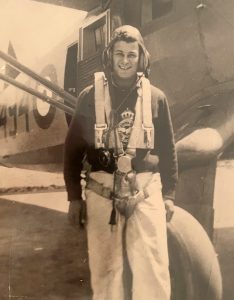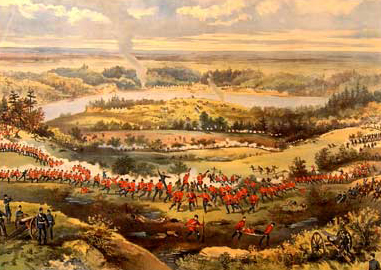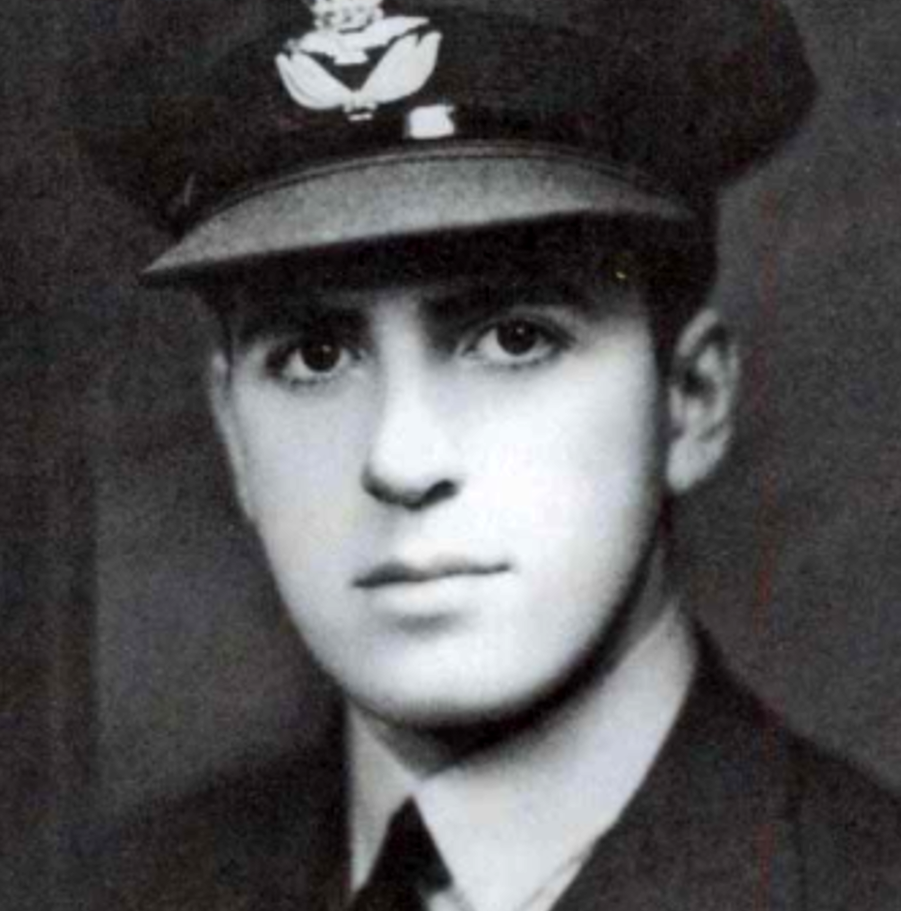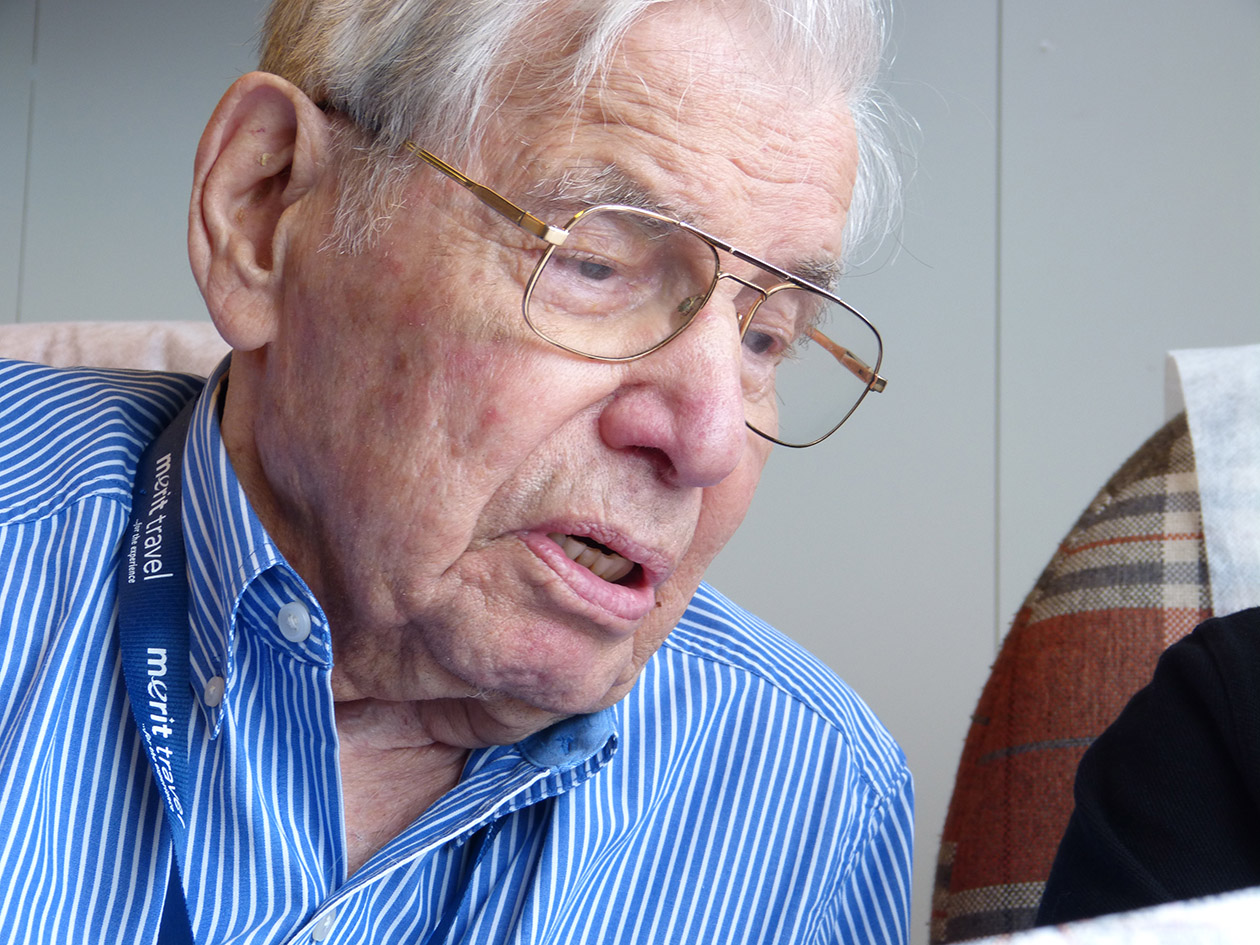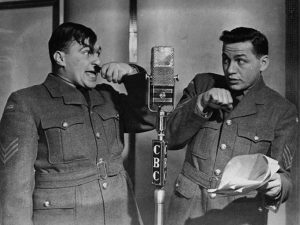
It’s June 1944. Two men in Canadian Army battledress are hunkered down waiting for orders. One’s a soldier with sergeant’s stripes. The other’s a private in a greatcoat.
“Time to move out,” says the sergeant.
“I won’t do it,” retorts the private.
“You will, too. When an order is given, it must be obeyed!” And the sergeant points a gun at the enlisted man. “Do it or else.”
At precisely the same moment, there’s the sound of an artillery shell exploding nearby, and the two soldiers dive for cover. Sgt Johnny Wayne then turns to Pte Frank Shuster and says, “And we’re still in Canada! Imagine what it’ll be like when we get overseas!” (more…)
